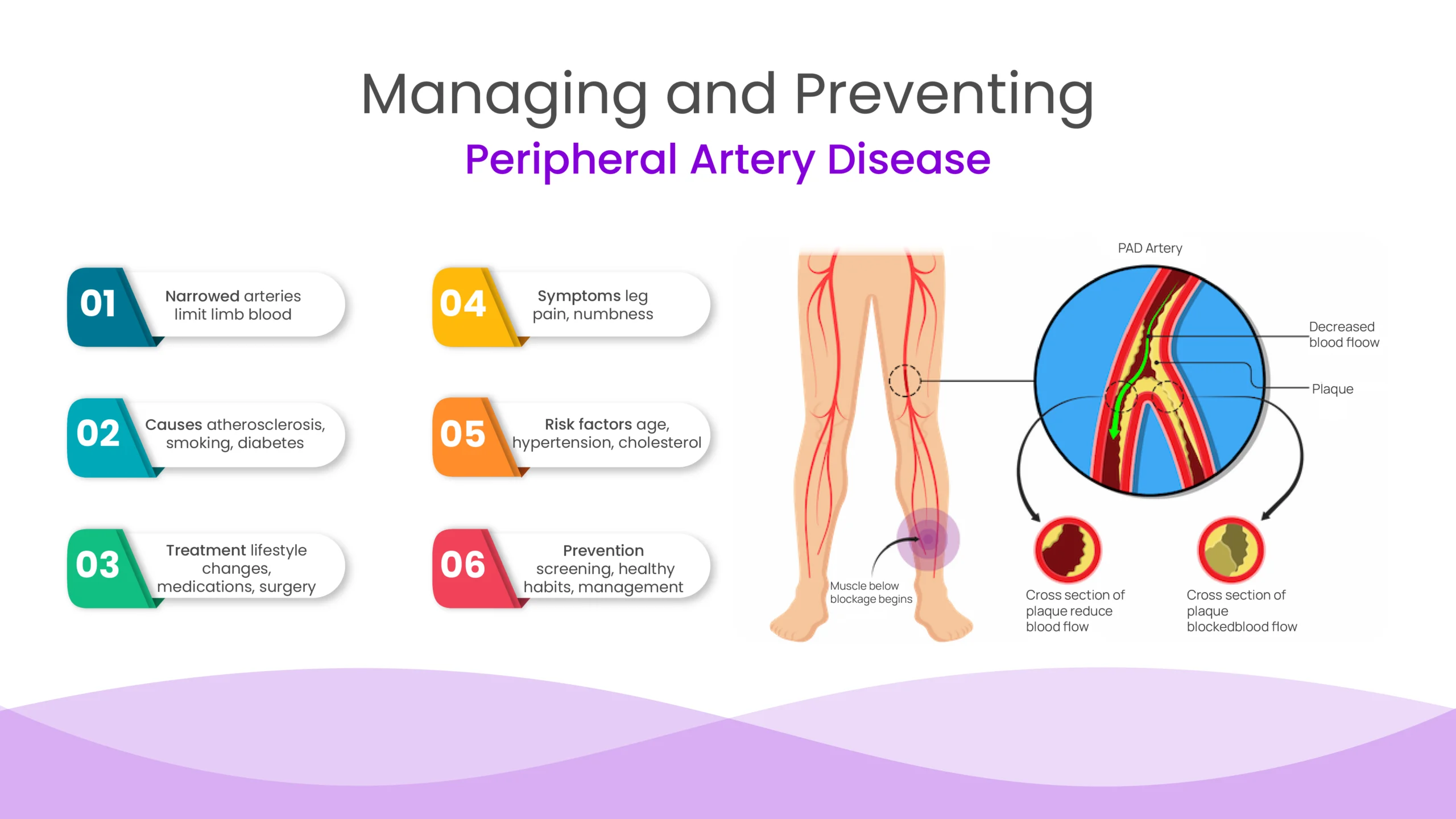
Author:- Mr. Ritesh Sharma
There are many cardiovascular conditions that are characterized by narrowed arteries. One of these conditions is peripheral artery disease. In this disease, due to the narrowed arteries, sufficient blood is not able to reach the limbs of the body. While, on the surface, this disease sounds very normal, it can lead to serious complications such as limb ischemia, heart attack, and stroke. Therefore, it is essential to adopt correct prevention methods to steer clear of this cardiovascular disease.
Furthermore, if you are affected by this disease, it is essential to opt for the correct treatment methods promptly so that you get cured of it as quickly as possible. Now, peripheral artery disease despite being a potentially serious cardiovascular condition remains under discussion. Both general people and clinicians should make themselves aware of all facets of this disease to ensure they don’t even face something as minor as heart palpitations due to it.
In this blog, we will cover all important aspects of peripheral artery disease. This will be a deeply elaborate discussion regarding the disease, its causes, risk factors, and prevention methods. So, if you have never heard of peripheral artery disease, get educated and empowered by this blog.
Understanding Peripheral Artery Disease
Peripheral Artery Disease (PAD) primarily affects the arteries outside the heart and brain, commonly those supplying blood to the legs. The most frequent cause is atherosclerosis, where fatty deposits build up in the artery walls, leading to reduced blood flow causing conditions like tachycardia in which the heartbeat exceeds more than 100 beats per minute. Symptoms of PAD include leg pain while walking (claudication), numbness, weakness, and in severe cases, sores or ulcers that do not heal. However, many individuals with PAD may remain asymptomatic.
Risk Factors for Peripheral Artery Disease ( PAD )
Understanding the risk factors is crucial for both prevention and management:
- Smoking: This is the most significant risk factor for PAD. Smoking damages the arteries and promotes atherosclerosis.
- Diabetes: High blood sugar levels can damage blood vessels and nerves, increasing the risk of PAD.
- High Blood Pressure: Hypertension damages the arterial walls, contributing to atherosclerosis.
- High Cholesterol: Elevated levels of cholesterol can lead to plaque formation in the arteries.
- Age: The risk of PAD increases with age, especially after 50.
- Family History: A family history of cardiovascular diseases increases the likelihood of PAD.
Preventing Peripheral Artery Disease
Effective management of PAD focuses on alleviating symptoms, improving quality of life, and preventing complications. Here are the key strategies:
Lifestyle Modifications:
- Smoking Cessation: Quitting smoking is the most crucial step. Nicotine replacement therapies, medications like varenicline, and counseling can assist in this process.
- Exercise: Regular physical activity, especially supervised walking programs, can improve symptoms of claudication and overall cardiovascular health. Aim for at least 30 minutes of moderate exercise most days of the week.
- Healthy Diet: A diet low in saturated fats, trans fats, and cholesterol, and rich in fruits, vegetables, and whole grains can help manage PAD. The Mediterranean diet is often recommended.
- Weight Management: Maintaining a healthy weight reduces the burden on the arteries and improves overall cardiovascular health.
Medical Treatments:
- Medications: Several medications can help manage PAD, including antiplatelet agents like aspirin or clopidogrel to reduce the risk of clotting, statins to lower cholesterol, and medications to manage blood pressure and diabetes.
- Cilostazol: This medication can improve symptoms of claudication by widening the arteries and preventing blood clots.
- Angioplasty and Stenting: For severe cases, minimally invasive procedures like angioplasty (widening the artery) and stenting (keeping the artery open) can restore blood flow.
- Surgical Options: In some instances, bypass surgery may be necessary to circumvent the blocked artery.
Monitoring and Follow-Up:
- Regular check-ups with a healthcare provider are essential for monitoring the progression of PAD and the effectiveness of treatment.
- Ankle-Brachial Index (ABI) tests can measure the severity of PAD and guide treatment decisions.
Managing Peripheral Artery Disease
Preventing PAD involves adopting a proactive approach to mitigate the risk factors. Here are essential preventive measures:
Regular Screening:
- High-risk individuals, especially those over 50 with a history of smoking, diabetes, hypertension, or high cholesterol, should undergo regular screenings for PAD.
- ABI testing is a simple and effective screening tool.
Healthy Lifestyle Choices:
- Avoid Smoking: Never start smoking, or quit if currently smoking. Avoid exposure to secondhand smoke.
- Exercise Regularly: Engage in regular physical activities, including walking, cycling, or swimming. Exercise improves circulation and overall cardiovascular health.
- Balanced Diet: Follow a heart-healthy diet that includes plenty of fruits, vegetables, lean proteins, and whole grains. Limit intake of salt, sugar, and unhealthy fats.
- Weight Management: Maintain a healthy weight through diet and exercise. Obesity is a significant risk factor for PAD and other cardiovascular diseases.
Control Chronic Conditions:
- Manage Diabetes: Keep blood sugar levels within the target range through diet, exercise, and medication.
- Regulate Blood Pressure: Regular monitoring and medication adherence are crucial for controlling hypertension.
- Cholesterol Management: Regularly check cholesterol levels and take prescribed medications to manage high cholesterol.
Education and Awareness:
- Increasing awareness about PAD is essential for early detection and prevention. Educational programs and community outreach can inform people about the risk factors and symptoms of PAD.
- Patients with PAD should be educated about the importance of medication adherence and lifestyle modifications to manage their condition effectively.
In conclusion, peripheral artery disease is a highly hazardous condition that should be discussed more in the realm of cardiac care. It is a plausible condition that requires prompt treatment if you are affected by it. Moreover, you safeguard yourself from it, you must adopt a steadfast approach and make some serious changes in your lifestyle. Regular monitoring is also paramount for people likely to get affected by its risk factors.



